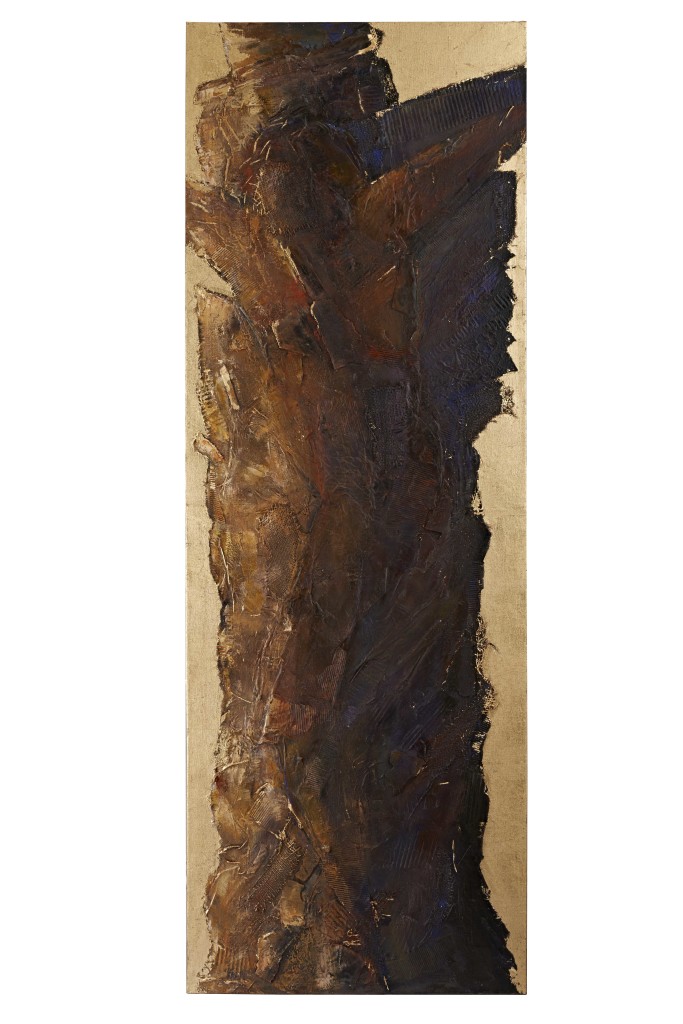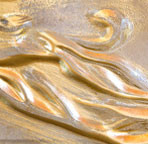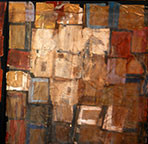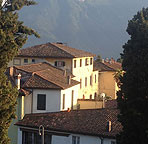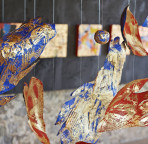Thou alone wast counted worthy
this world’s Ransom to sustain,
that a shipwrecked race for ever
might a port of refuge gain,
with the sacred Blood anointed
of the Lamb for sinners slain.—John Mason Neale’s translation of Venantius Fortunatus’ Passiontide hymn Pange Lingua Gloriosi Proelium Certaminis.
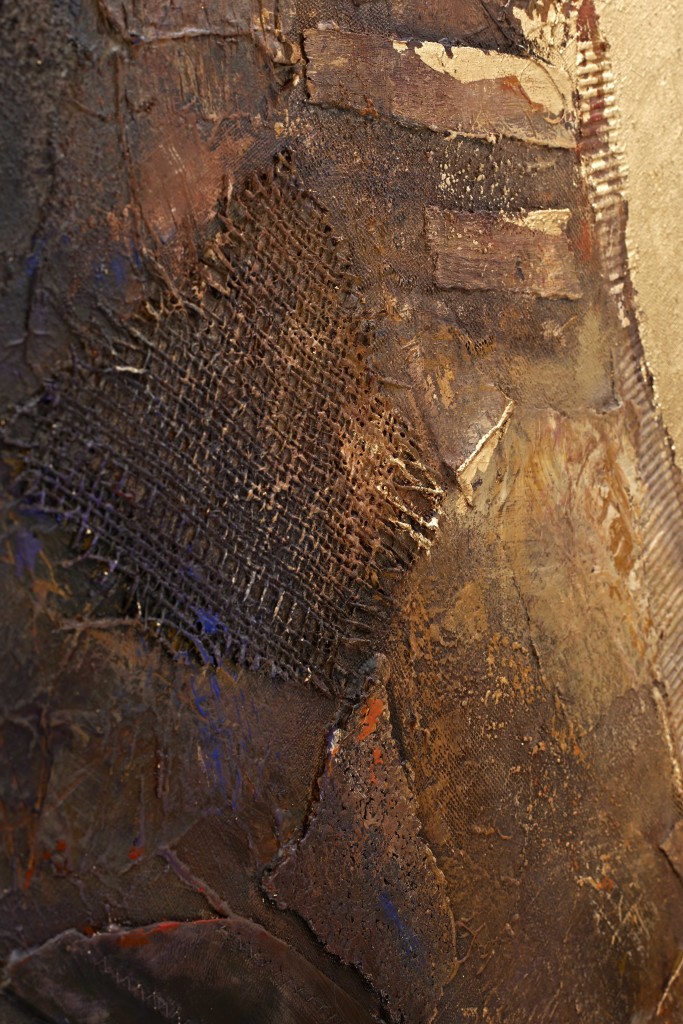
As important as symbolic reference is to Kanaga’s work, Tree of Mercy, Tree of Life, shines in the abstract passages from which it is built. On closer inspection the surfaces of both trees and the central cruciform are awash in glorious found texture. Swatches of fabric, some loosely woven, some stitched, wild passages of untamed fiber, corrugated board and the unidentifiable debris of modern life infuse the timeless with the now. The abstraction of the faithful tree opens the viewer up to a wealth of further reference and association, throwing wide the windows to the sublime.
In the presence, then, of both the burlap and the gold, the impoverished and the gilded, the detritus of the common life and otherworldly wealth, the viewer might well recall another point of reference: St. Bonaventure’s The Tree of Life, an extended meditation on the life of Christ by the great thirteenth century mystic philosopher, theologian, and doctor of the Church. In the passage “Jesus, Nailed to the Cross” (section 26), St. Bonaventure describes both the crucified, “Thrown roughly upon the wood of the cross, spread out, pulled forward and stretched back and forth like a hide, he was pierced by pointed nails, fixed to the cross by his sacred hands and feet and most roughly torn with wounds” and then includes a purely personal response: “He appeared to you as your beloved cut through with wound upon wound in order to heal you. Who will grant me that my request should come about and that God will give me what I long for, that having been totally transpierced in both mind and flesh, I may be fixed with my beloved to the yoke of the cross?” This is no abstract theology. Similarly we can trust that Kanaga’s work, is born of personal engagement. The artist states: “All my work comes out of personal experiences where I have seen the hand of God or experienced God’s mercy in my life . . . that’s all I’ve really got to paint from, a passionate desire to communicate a spiritual reality.”
As abstraction invites an opening of text and further reference, so too the viewer may contemplate the work and wonder if the imagery of the third panel, as it bursts it’s frame, does not suppress a subtle allusion of the blessed body broken there.
Comments welcome.
